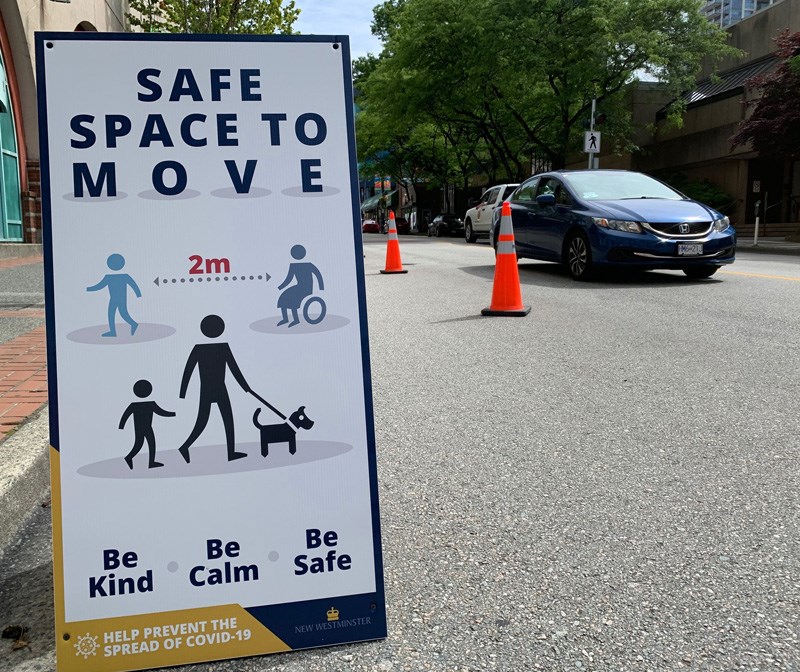It will cost Port Moody taxpayers up to $9,000 to turn parts of St. George Street into temporary slow zones until the end of next summer.
The proposal, to be considered by council at its meeting Tuesday, would prioritize pedestrians and cyclists by closing or restricting traffic to local residents only along three sections of St. George Street, from Buller to Moody streets, from Grant to Kyle streets and Elgin to Albert streets.
According to a staff report, the reallocation of road space to more active uses would help the city meet demand for more access to outdoor space as well as allow more room for physical distancing.
The slow zones would be marked with signs and traffic barricades.
The report, authored by Port Moody’s manager of infrastructure engineering services, Stephen Judd, said while afternoon traffic volumes along busy St. Johns Street have returned to pre-pandemic levels, traffic at the peak of morning rush hour remains low — almost 800 fewer cars between 7 and 8 a.m. — than passed through the intersection at Moody Street on March 13.
Judd said combined with lower use of transit, more people are choosing to get around by walking and cycling which is likely to increase even more as more local businesses and services reopen.
“Staff anticipate not only the return of pedestrian, cyclists and vehicles, but also an increase from the historic amount of activity on streets, paths and sidewalks,” he said.
Requests by businesses for outdoor space like patios to allow physical distancing will also put more demand on space pedestrians and cyclists need to get around, added Judd.
Two other stretches of roadway, along Ungless Way from Guildford to the entrance to Eagle Ridge Hospital, and the merge lane along Murray Street between the railway tracks and the entrance into Shoreline trail, have also been identified as potential slow zones. But, Judd said in his report, they would involve the removal of about 55 curbside parking spots.
Staff will monitor pedestrian and cyclist traffic, as well as usage of the parking spaces, along those stretches through the rest of the summer.



